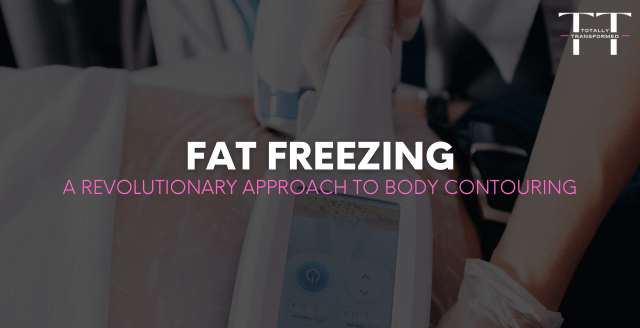In the quest for a sculpted physique, traditional methods like diet and exercise often fall short in targeting stubborn fat deposits in specific areas. Enter fat freezing, a groundbreaking technique that has transformed the landscape of body contouring. In this blog post, we’ll explore the concept of fat freezing in body contouring, its uses, and why it has become a popular choice for individuals seeking a non-invasive solution to achieve their desired body shape.
Understanding Fat Freezing
Fat freezing, also known as cryolipolysis, is a non-invasive cosmetic procedure that targets and reduces fat cells by cooling them to freezing temperatures. The process involves the application of a specialized device to the targeted area, which delivers controlled cooling to freeze fat cells without damaging surrounding tissue. Over time, the frozen fat cells crystallize and undergo natural cell death, ultimately being eliminated from the body through the lymphatic system.
The Science Behind Fat Freezing in Body Contouring
The concept of fat freezing is rooted in the principle of selective thermogenesis, which exploits the differential susceptibility of fat cells to temperature changes compared to surrounding tissues. Fat cells, or adipocytes, are more sensitive to cold temperatures than other types of cells in the body. By subjecting fat deposits to controlled cooling, fat freezing effectively triggers apoptosis, or programmed cell death, in fat cells while leaving surrounding tissues unharmed.
In layman’s terms, Fat freezing works because fat cells are more sensitive to cold than other types of cells in your body. When you apply controlled cooling to an area with fat deposits, it causes those fat cells to die off naturally without harming the surrounding tissues. This process is like putting ice on a specific area, which makes the fat cells there go away over time, leaving your skin and other cells untouched.
Uses of Fat Freezing in Body Contouring
Fat freezing has gained popularity as a versatile solution for addressing various aesthetic concerns and achieving targeted fat reduction. Some common uses of fat freezing include:
Spot Reduction
Fat freezing is particularly effective in targeting stubborn fat deposits in areas such as the abdomen, flanks (love handles), thighs, and arms. It allows individuals to address specific trouble spots that may be resistant to diet and exercise.
Body Contouring
By selectively reducing fat in targeted areas, fat freezing can help contour and sculpt the body, creating a more defined and proportionate silhouette. Whether seeking a slimmer waistline or more toned thighs, fat freezing offers a customizable approach to achieving desired body contours.
Non-Invasive Alternative
Unlike invasive procedures like liposuction, fat freezing offers a non-surgical alternative with minimal discomfort and downtime. It allows individuals to undergo fat reduction treatments without the risks and recovery associated with surgery, making it an attractive option for those seeking less invasive solutions.
Adjunct to Healthy Lifestyle
While fat freezing can effectively reduce fat in targeted areas, it is not a substitute for a healthy lifestyle. Combining fat freezing treatments with regular exercise and a balanced diet can maximize results and support long-term weight management goals.
Fat freezing has emerged as a game-changing technology in the field of body contouring, offering a safe, effective, and non-invasive solution for reducing stubborn fat deposits and sculpting the body. Whether used for spot reduction, body contouring, or as a non-invasive alternative to surgery, fat freezing provides individuals with a customisable approach to achieving their aesthetic goals. With its proven efficacy and minimal downtime, fat freezing continues to revolutionize the way individuals approach fat reduction and body sculpting, empowering them to embrace their best selves with confidence and pride.
If you would like to book your next fat freezing appointment. Visit our booking system link: Booking System




